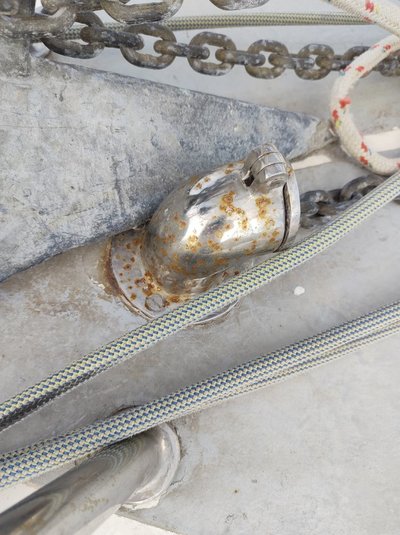Munkul
Jack of some trades, Master of none
- Messages
- 7,857
- Location
- Cumbria
That's really interesting. If I had a bit more time I'd like to do some coupon testing to see the difference between medium rare and well-done pickling/passivating in terms of H2S/weak H2SO4 resistance.the rate of decomposition was shown to depend a lot on just how the stainless tanks were pickled and passivated. The tanks were made in the US, but in our lab tests, they were shown to be really variable one to another, some OK, some very poor.
We went out the States and it turned out that they had really detailed written procedures but the staff were not sticking to them; if they reckoned a tank didn't look right, they'd choose to process it a second time. Once they tightened up on the processing, we got good outcomes, but by then we realised the critical nature of stainless passivation and how it was going to be significant in a number of upcoming projects.
(H2S + H2O makes weak H2SO4 and starts pitting into weak points especially in absence of O2 is what we find)
Even the metallurgical labs didn't suggest anything to do with passivation, even though it was clearly a HAZ problem that didn't affect large areas away from welds.




 . I was a member of a group that was focussed on the oxidation of the fuel cladding in the AGR's which used 20Cr 25Ni, niobium stabilised steel. Lab tests done before it went in to use gave results that showed lots of spalling of the (highly radioactive) oxide, but activity levels in-reactor were much lower that expected, suggesting spalling was not so bad. At the time when I left nuclear, nobody could explain why the lab data and in-reactor experience was so different, but thought it was very worrying.
. I was a member of a group that was focussed on the oxidation of the fuel cladding in the AGR's which used 20Cr 25Ni, niobium stabilised steel. Lab tests done before it went in to use gave results that showed lots of spalling of the (highly radioactive) oxide, but activity levels in-reactor were much lower that expected, suggesting spalling was not so bad. At the time when I left nuclear, nobody could explain why the lab data and in-reactor experience was so different, but thought it was very worrying.


